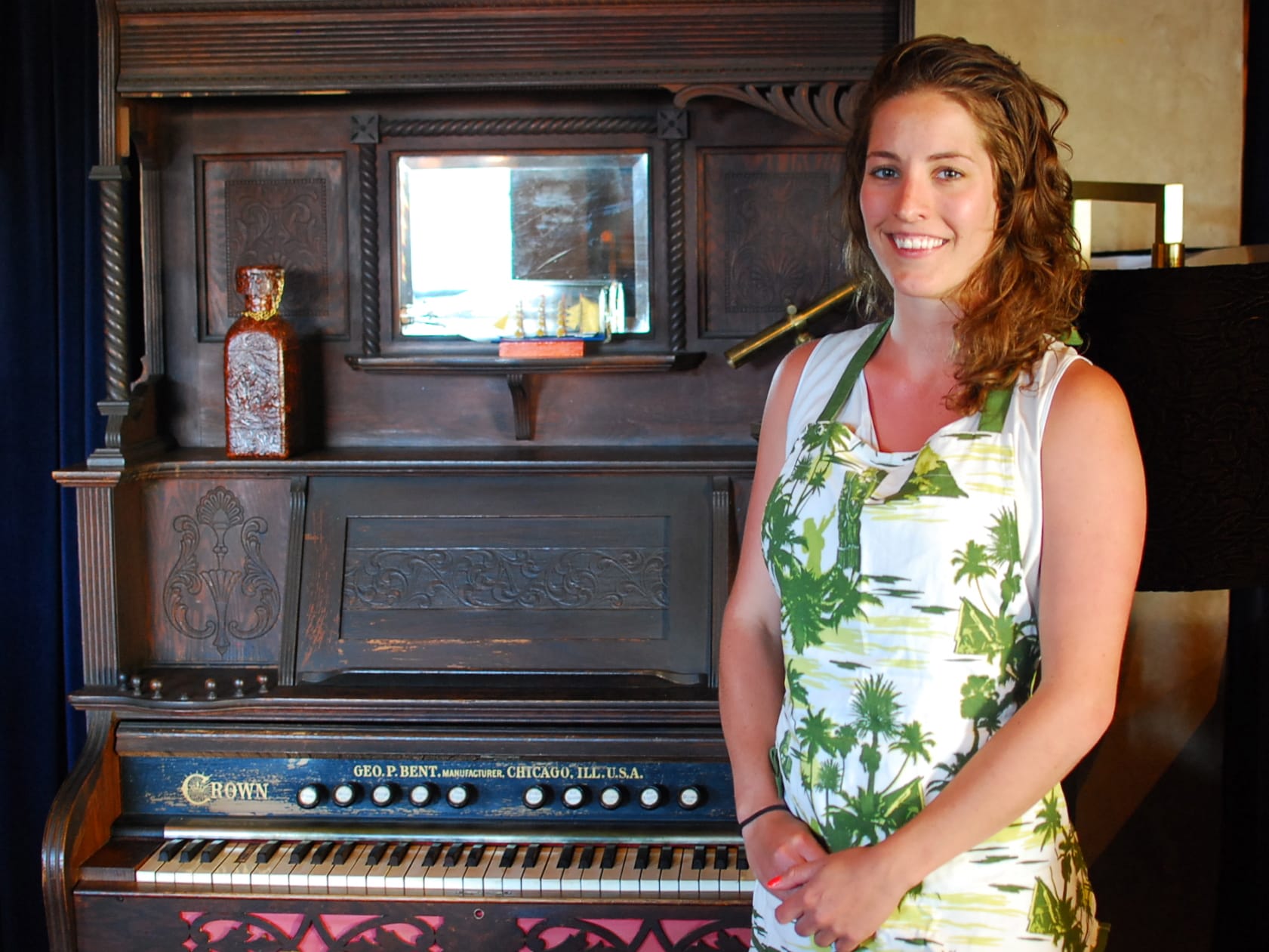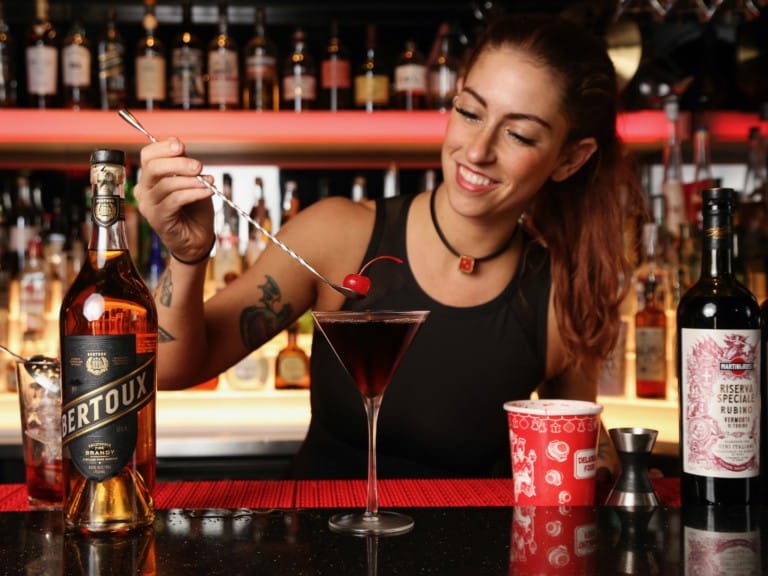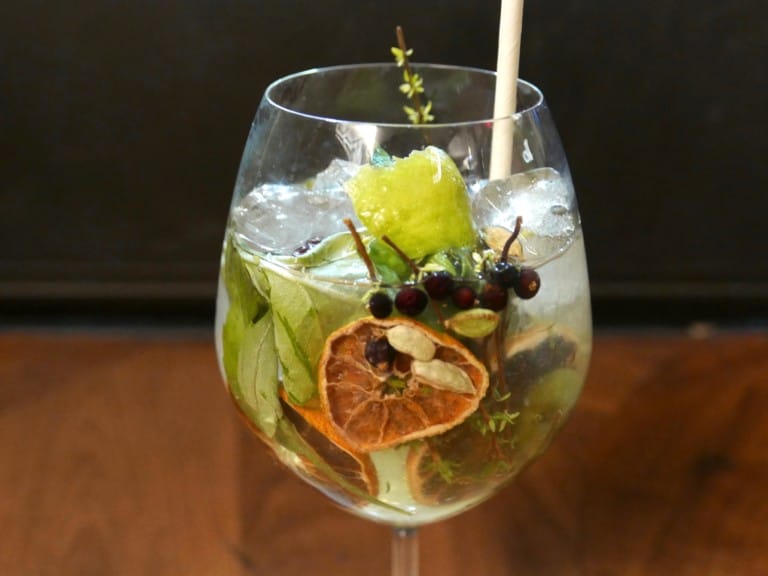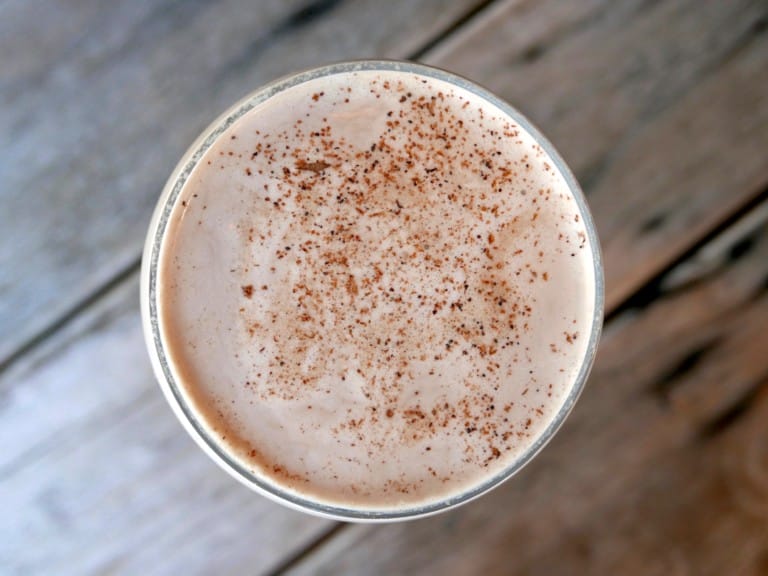Vermont native Ivy Mix fell for tequila and mezcal while working through college at Café No Se in Antigua, Guatemala. She parlayed that knowledge into a bartending career in New York City, beginning at Fort Defiance, and now at Clover Club and Mother’s Ruin. She also has a demanding but rewarding side project with Lynnette Marrero called Speed Rack. I met Mix at The Spare Room on June 20, and she explained her spirited background and approach.
At what point did you know that you would work with cocktails and spirits for a living?
For a living, I would say, is different from when I realized that I like to do it. I first started working with spirits when I went to Guatemala when I was a freshman in college. I went to Guatemala to save the children, learn some Spanish, and I ended up being there for a week, and after being there for a week, I walked into a bar and I fell in love with it. I was 19 years old, so I wasn’t able to drink in the States, obviously, in bars. I fell in love with [Cafe No Se], fell in love with the people, and ended up moving back to Guatemala to live off and on for the next four years, working in this bar. It was a bar that specialized in tequila and mezcal, so it was more something that I knew I liked to do. I knew I had a passion for spirits, especially agave spirits and what originally got me into alcohol and bartending was actually the travel it awarded me. Especially living in Central America, I traveled to Mexico once or twice a month to look at and learn about different types of spirits. I realized I wanted to do this for a career, for a living, after I moved to New York in 2008, after living in Central America for awhile, and realized…I didn’t like working in galleries. I realized I didn’t like being part of that hierarchical system at all, and I realized that I didn’t really enjoy that whole scene. So I got a job as a cocktail waitress at Mayahuel in New York City because I had good friends in Mexico saying, “Hey, there’s a mezcal bar opening up in New York. You know so much about mezcal, you should become a bartender there. You’re a bartender. Go do it.” So I didn’t know at that point how to make a drink. Like, if you asked me for a Manhattan, I can probably make you one, and I would shake it, and I probably would not put bitters in it. It wouldn’t have been good. So working at Mayahuel as a cocktail waitress, that’s when I realized I wanted to become a bartender, again, but do it at this level of artistic creation.
Where did you go to college?
I went to college at Bennington, in southern Vermont. It’s a very small, very liberal arts school. I majored in Philosophy and Fine Art, and when I decided I was going to major in Philosophy and Fine Art, my advisor, who I still love to this day – he was a great mentor of mine – said, “Why do you want to be a Philosophy major? You know that means you’re just going to be a bartender.” I laughed and said, “Sure, that’s great.” When I finally made the leap and said, “This is what I’m going to do,” for many people, that’s the moment in a bartender’s life, “Is this really…this is it. Yeah, I’m going to do this. This is really what I’m going to do.” What that moment came, “So, I actually am going to be a bartender.” Bennington’s very liberal, which is why I was able to live in Central America for 5-10 months out of the year when I was in college. It was really nice for that.
What sort of mediums do you still practice with your art?
I still practice. I have a studio in Bushwick, in Brooklyn. It has changed a lot from when I was in college. When I was in college, I kind of had unlimited funds, or unlimited resources, that were free. I had a ginormous woodshop. I could go anywhere and grab anything and make fairly expensive – for me, inexpensive, since I was a student – pieces. Now that I’m not in college anymore – nor have I been for awhile – my work has changed to something that’s more tangible to create on a more financially stable level. And most of it, actually, for the last two or three years, has been inspired by my bar work. The materials that I use – mostly I do sculpture and/or photography. If you want to give me a medium, I guess that would be it. Sometimes installation as well. For instance, I have been doing pieces for the last two-and-a-half years that are comprised totally of straws, and they’re almost optical pieces. You take a bunch of straws and hold them together so the openings are toward you, almost in a circle, and you look through them. They pixilate your view for you. You can see exactly what’s on the other side of the room, but it’s pixilated. So it breaks down your vision, which is something I like, and currently I’m doing lots of work with bubbles. It’s all inspired from just spending most of my time in a bar. The meaning behind them is different, but the things I’m making them out of have to do with bar work.
How do you think being an artist helps you as a bartender?
That’s actually a very good question. I think I’m still actually an artist. I think most bartenders are actually artists. It’s a different sense you’re accessing. Visual art is existing with sight. Vision. We want something appealing for the eyes. Music does that same thing, but for your ears, and I think that cocktails – just like good food, just like good wine, whatever – is for your mouth. So you’re trying to create an experience for someone that they’re experiencing in a different way. Just as I can look at a Cindy Sherman photograph and say, “Wow, that’s really beautiful.” Or it’s not beautiful. “It makes me think these things when I think about that.” I can also do that with spirits, in many different ways. You can be historical. You can use two different spirits, if somebody’s dorky enough to do their research, and they know that these certain countries have had historical trials and tribulations and to put those things together is a little bit weird. Or you can do things like making a Tiki drink with Orgeat and Don’s Mix and you can do that with a Russian vodka, or an American made gin, which is not conventional, but if you think about it in a different way, conceptually, it’s interesting. I think that’s just how I look at making cocktails, just in a different way.
How did the Clover Club opportunity come about?
INTERVIEW CONTINUED ON NEXT PAGE









Leave a Comment